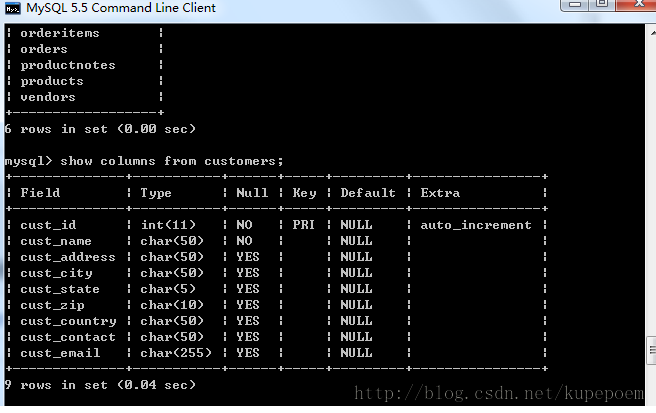mysql data grouping SQL aggregate functions can be used to summarize data. This allows us to count rows, calculate sums and averages, and get maximum and minimum values without retrieving all the data. All calculations so far have been performed on all data in the table or on data matching a specific where clause. As a reminder, the following example returns the number of products provided by supplier 1003: Input: select count(*) as mun_prods from products where vend_id = 1003; Output: But what if you want to return the number of products provided by each supplier? Or what if we return products provided by suppliers who only provide a single product, or return suppliers who provide more than 10 products? This is the time for groups to show their talents. Grouping allows data to be divided into multiple logical groups so that aggregate calculations can be performed on each group. MySQL creates groupings in the group by clause of the select statement. The best way to understand grouping is to look at the following
1. mysql data grouping: Create grouping

Introduction: SQL aggregate functions can be used to summarize data. This allows us to count rows, calculate sums and averages, and get maximum and minimum values without retrieving all the data. All calculations so far have been performed on all data in the table or on data matching a specific where clause. As a reminder, the following example returns the number of products provided by supplier 1003
2. WeChat public platform development (74) User group management_PHP tutorial

Introduction: WeChat public platform development (74) User group management. WeChat public platform development user group management group management interface query group creation group modification group name mobile user group Author: Fang Bei Studio Address: http://www.cnblogs.com/tx
3. PHP realizes the function of adding friends
Introduction: Ideas for realizing the function of adding friends in PHP: 1 After the user sends a friend application, the application is stored in the application data table, and the status is Unverified. 2 When the user logs in, check whether there is a uid in the application form that is the same as the respondent id. If it is agreed, change the status and insert the data into the corresponding friend data table. Otherwise, delete the data in the application data table. 3. When one party deletes a friend, the deleting person’s friends are deleted from the deleted person. 4 Create a group name field, and set the field to
4. php redeems the friend function
Introduction: php implements adding Friendship function idea: 1. After the user sends a friend application, the application is stored in the application data table, and the status is "Unverified" 2. When the user logs in, check whether there is a uid in the application form that is the same as the applicant's ID. If he agrees, change the status. And insert the data into the corresponding friend data table. Otherwise, delete data 3 in the application data table. When one party deletes a friend, delete the deleted person's friends 4 from the deleted person. Create a group name field, and set the field&
#5. WeChat Public Platform Development (74) User Group Management
Introduction: WeChat Public Platform Development (74) Users Group management. WeChat public platform development user group management group management interface query group creation group modification group name mobile user group Author: Fang Bei Studio Address: http://www.cnblogs.com/tx
6. SQL must-know notes 8 Grouped data
Introduction: 1. Use the GROUP BY clause to create a group example: SELECT vend_id, COUNT ( * ) AS num_prods FROM Products GROUP BY vend_id;
The above is the detailed content of Recommended articles about creating groups. For more information, please follow other related articles on the PHP Chinese website!